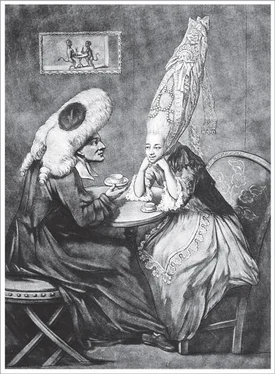Bill Bryson - At Home
Здесь есть возможность читать онлайн «Bill Bryson - At Home» весь текст электронной книги совершенно бесплатно (целиком полную версию без сокращений). В некоторых случаях можно слушать аудио, скачать через торрент в формате fb2 и присутствует краткое содержание. Жанр: Старинная литература, на английском языке. Описание произведения, (предисловие) а так же отзывы посетителей доступны на портале библиотеки ЛибКат.
- Название:At Home
- Автор:
- Жанр:
- Год:неизвестен
- ISBN:нет данных
- Рейтинг книги:4 / 5. Голосов: 1
-
Избранное:Добавить в избранное
- Отзывы:
-
Ваша оценка:
- 80
- 1
- 2
- 3
- 4
- 5
At Home: краткое содержание, описание и аннотация
Предлагаем к чтению аннотацию, описание, краткое содержание или предисловие (зависит от того, что написал сам автор книги «At Home»). Если вы не нашли необходимую информацию о книге — напишите в комментариях, мы постараемся отыскать её.
At Home — читать онлайн бесплатно полную книгу (весь текст) целиком
Ниже представлен текст книги, разбитый по страницам. Система сохранения места последней прочитанной страницы, позволяет с удобством читать онлайн бесплатно книгу «At Home», без необходимости каждый раз заново искать на чём Вы остановились. Поставьте закладку, и сможете в любой момент перейти на страницу, на которой закончили чтение.
Интервал:
Закладка:
Returning home, and now armed with some knowledge of the scientific principles of adhesion, White experimented with various native ingredients and quickly formulated a compound that worked even better than Parker’s Roman cement. It was a great moment in American technological history—indeed, it could be said to be the beginning of American technological history—and it deserved to make White rich and celebrated. In fact, it did neither. White’s patents entitled him to a royalty of four cents on each bushel sold—a small enough sum as it was—but the manufacturers declined to share their profits. He pressed his claims through the courts but was unable to enforce any judgments that went his way. The result was a long slide into penury.
The manufacturers, meantime, grew rich making what was now the best hydraulic cement in the world. Thanks in large part to White’s invention, the canal opened early, in 1825, after just eight years of construction. It was a triumph from the start. So many boats used it—thirteen thousand in the first year—that at night their running lights looked like swarms of fireflies on the water, according to one captivated witness. With the canal, the cost of shipping a ton of flour from Buffalo to New York City fell from $120 a ton to $6 a ton, and the carrying time was reduced from three weeks to just over one. The effect on New York’s fortunes was breathtaking. Its share of national exports leaped from less than 10 percent in 1800 to over 60 percent by the middle of the century; in the same period, even more dazzlingly, its population went from ten thousand to well over half a million.
Probably no manufactured product in history—certainly none of greater obscurity—has done more to change a city’s fortunes than Canvass White’s hydraulic cement. The Erie Canal secured the economic primacy not only of New York within the United States but also, very possibly, of the United States within the world. Without the Erie Canal, Canada would have been ideally positioned to become the powerhouse of North America, with the St. Lawrence River serving as the conduit to the Great Lakes and the rich lands beyond.
So the great unsung Canvass White didn’t just make New York rich; more profoundly, he helped make America. In 1834, exhausted by his legal battles and suffering from some serious but unspecified malady—probably consumption—he traveled to St. Augustine, Florida, in the hope of restoring his health; unfortunately, he died there soon after arriving. He was already forgotten by history and so poor that his wife could barely afford to bury him. And that is probably the last time you will ever hear his name.
I mention all this here because we have descended to the cellar, an unfinished and basic space in the Old Rectory, as in most English houses of the period. Originally, the cellar served primarily as a coal store. Today it holds the boiler, idle suitcases, out-of-season sporting equipment, and many sealed cardboard boxes that are almost never opened but are always carefully transferred from house to house with every move in the belief that one day someone might want some baby clothes that have been kept in a box for twenty-five years. It isn’t a very congenial space, but it does have the compensating virtue of providing some sense of the superstructure of the house—the things that hold it up and keep it together, which is the subject of this chapter. The reason I have prefaced it all with the story of the Erie Canal is to make the point that building materials are more important and even, dare I say, interesting than you might think. They certainly help make history in ways that don’t often get mentioned in books.
Indeed, the history of early America is really a history of coping with shortages of building materials. For a country famed for being rich in natural resources, America along the eastern seaboard proved to be appallingly deficient in many basic commodities necessary to an independent civilization. One of those commodities was limestone, as the first colonists discovered to their dismay. In England, you could build a reasonably secure house with wattle and daub—essentially a framework of mud and sticks—if it was sufficiently bound with lime. But in America there was no lime (or at least none found before 1690), so the colonists used dried mud, which proved to be woefully lacking in sturdiness. During the first century of colonization, it was a rare house that lasted more than ten years. This was the period of the Little Ice Age, when a century or so of bitterly cold winters and howling storms battered the temperate world. A hurricane in 1634 blew away—literally just lifted up and carried off—half the houses of Massachusetts. Barely had people rebuilt when a second storm of similar intensity blew in, “overturning sundry howses, uncovering [i.e., unroofing] diverse others,” in the words of one diarist who lived through it. Even decent building stone was not available in many areas. When George Washington wanted to pave his loggia at Mount Vernon with simple flagstones, he had to send to England for them.
The one thing America had in quantity was wood. When Europeans arrived, the New World was a continent containing an estimated 950 million acres of woodland—enough to seem effectively infinite. But in fact the woods were not quite as boundless as they first appeared, particularly as the newcomers moved inland. Beyond the mountains of the eastern seaboard, Indians had already cleared large expanses and burned much of the forest undergrowth to make hunting easier. In Ohio, early settlers were astonished to find that the woods were more like English parks than primeval forests, and roomy enough to allow the driving of carriages through the trees. Indians created these parks for the benefit of bison, which they effectively harvested.
The colonists positively devoured wood. They used it to build houses, barns, wagons, boats, fences, furniture, and every possible sort of daily utensil from buckets to spoons. They burned it in copious amounts for warmth and for cooking. According to the historian of early American life Carl Bridenbaugh, the average colonial house required fifteen to twenty cords of firewood a year, enough to deplete local supplies quickly in most places. Bridenbaugh mentions one village on Long Island where every stick of wood to every horizon was exhausted in just fourteen years, and there must have been many others like it.
Huge additional acreages were cleared for fields and pastures, and even roadways resulted in literally widespread clearances. Highways in colonial America tended to be inordinately wide—165 feet across was not unusual—to provide safety from ambush and room to drive and graze herds of animals en route to market. By 1810, barely a quarter of Connecticut’s original woods remained. Farther west, Michigan’s seemingly inexhaustible stock of white pine—170 billion board feet of it when the first colonists arrived—shrank by 95 percent in just a century. Much American wood was exported to Europe, particularly in the form of shingles and weatherboards.* As Jane Jacobs notes in The Economy of Cities , a lot of American wood fueled the Great Fire of London.
One common assumption is that the early settlers built log cabins. They didn’t. They didn’t know how. Log cabins were introduced by Scandinavian immigrants in the late eighteenth century, at which point they did rapidly catch on. Although log cabins were comparatively straightforward productions—that was of course their appeal—there was some complexity to them, too. Where the logs locked in place at the corners, the builders could use any of several types of notches—V notch, saddle notch, diamond notch, square notch, full dovetail, half dovetail, and so on—and these, it turns out, had curiously particular geographical affinities that no one has ever been able to entirely explain. Saddle notching, for instance, was the preferred method in the Deep South, central Wisconsin, and southern Michigan but was found almost nowhere else. Residents of New York State, meanwhile, overwhelmingly went for a method of notching called false corner-timbering, but they abandoned that style almost completely when they moved on. A history of American migration can be plotted—in fact has been plotted—by working out which notches appeared where, and whole careers have been spent trying to account for the different distribution patterns.
Читать дальшеИнтервал:
Закладка:
Похожие книги на «At Home»
Представляем Вашему вниманию похожие книги на «At Home» списком для выбора. Мы отобрали схожую по названию и смыслу литературу в надежде предоставить читателям больше вариантов отыскать новые, интересные, ещё непрочитанные произведения.
Обсуждение, отзывы о книге «At Home» и просто собственные мнения читателей. Оставьте ваши комментарии, напишите, что Вы думаете о произведении, его смысле или главных героях. Укажите что конкретно понравилось, а что нет, и почему Вы так считаете.












